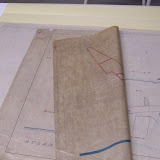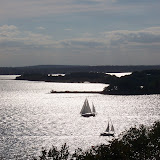
 On Sunday, Bethany, Patrick and I went out for brunch at the Kitchenette and then made our way to the Metropolitan Museum of Fine Art, when I almost got to live one of my childhood fantasies of being Claudia Kincaid in From the Mixed-Up Files of Mrs. Basil E. Frankweiler, who runs away from home with her brother Jamie. The two manage to hide themselves away in the Metropolitan Museum of Art and solve a mystery involving a statue possibly carved by Michaelangelo. It involves adventure, museums, and archival research--what's not to like?
On Sunday, Bethany, Patrick and I went out for brunch at the Kitchenette and then made our way to the Metropolitan Museum of Fine Art, when I almost got to live one of my childhood fantasies of being Claudia Kincaid in From the Mixed-Up Files of Mrs. Basil E. Frankweiler, who runs away from home with her brother Jamie. The two manage to hide themselves away in the Metropolitan Museum of Art and solve a mystery involving a statue possibly carved by Michaelangelo. It involves adventure, museums, and archival research--what's not to like? As incisive as the Guerrilla Girls may be in their critique of the fine art world's lack of support for women artists, I still think one of the best things about visiting art museums is the women one finds on display. The variety of women's bodies is absolutely stunning in comparison to the visual representations of women in our daily media. Their very multiplicity attests to the volatile nature of standards of beauty throughout history and across the world, from era to era and culture to culture.
As incisive as the Guerrilla Girls may be in their critique of the fine art world's lack of support for women artists, I still think one of the best things about visiting art museums is the women one finds on display. The variety of women's bodies is absolutely stunning in comparison to the visual representations of women in our daily media. Their very multiplicity attests to the volatile nature of standards of beauty throughout history and across the world, from era to era and culture to culture.For example, on this particular visit I was fascinated to see a 1661 Dutch painting, Visit to the Nursery, which shows a couple presenting their newborn to relatives. The mother holding the infant is dressed, but you can clearly see the gap in the front of her bodice, suggesting she is ready to nurse her child at any moment, despite the formality of the scene.
 Another picture I was enchanted by (Mom, this one's especially for you) was this portrait of a "mad" woman, Malle Babbe, which the museum describes as "in the style of Frans Hals." She is posed with an owl on her shoulder, which apparently symbolized foolish or "vulgar" behavior in the seventeenth century. I like the fact that "wise old owls" were once thought to be exactly the opposite.
Another picture I was enchanted by (Mom, this one's especially for you) was this portrait of a "mad" woman, Malle Babbe, which the museum describes as "in the style of Frans Hals." She is posed with an owl on her shoulder, which apparently symbolized foolish or "vulgar" behavior in the seventeenth century. I like the fact that "wise old owls" were once thought to be exactly the opposite. And finally, in a modern art gallery, I came across this painting (forgive me, but I forgot to note the painter and title; I will remedy that when I have the time) which I have always liked because of the juxtaposition of the very "feminine" colors and floral motifs with the girl's confident pose and forthright stare. On the floor below the painting was a child or about eight, carefully drawing a copy of the portrait in her sketchbook. I hope she pays way more attention to what the art museums have to say about the beauty of the human form than she does to the monotonous version of "femininity" being pedaled by our consumer culture.
And finally, in a modern art gallery, I came across this painting (forgive me, but I forgot to note the painter and title; I will remedy that when I have the time) which I have always liked because of the juxtaposition of the very "feminine" colors and floral motifs with the girl's confident pose and forthright stare. On the floor below the painting was a child or about eight, carefully drawing a copy of the portrait in her sketchbook. I hope she pays way more attention to what the art museums have to say about the beauty of the human form than she does to the monotonous version of "femininity" being pedaled by our consumer culture.You can see all my pictures from the Met at Picasa.

















